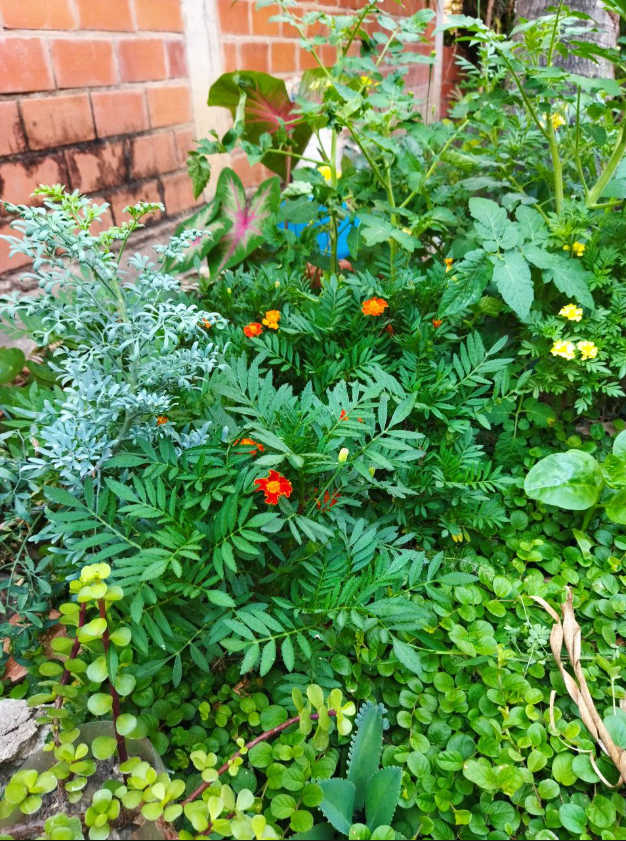
Spanish
Cuando la temporada de lluvia termina, todo mi jardín empieza a marchitarse y a verse seco y aburrido. Solo algunas pocas plantas resisten el inclemente calor y la falta de humedad. Pero en cuanto vuelve a llover, muchas reviven como por arte de magia, semillas que habían estado meses en la tierra emergen y se juntan formando un hermoso follaje heterogéneo. Pero, ¿Como hago que esto suceda? Bueno, lo primero es que rara vez podo mis plantas o corto las flores para poner en jarrones o algo parecido dentro de la casa, prefiero admirarlas justo donde nacen, en la planta. De esta manera, la mayoría de las plantas, dejan caer sus semillas que se depositan en la tierra esperando el mejor momento para brotar.
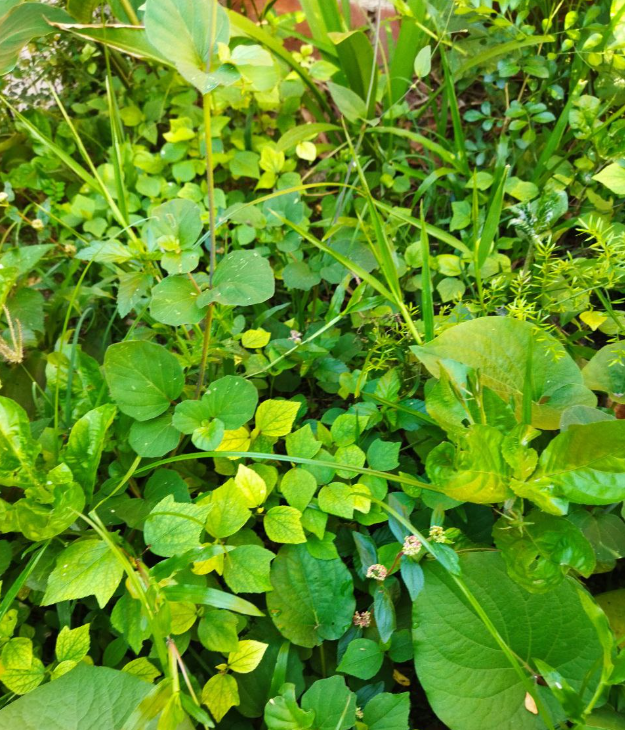
Aquí pueden ver un montón de plantines de Flor de Jamaica entre las hierbas
El segundo tip importante es que al momento de realizar las limpiezas, solo corto la grama un poco y saco de raíz las malas hierbas, así todas las semillas de las plantas que me gusten permanecen allí. Pero no solo las semillas, hay otras plantas como por ejemplo los Caladios, cuya raíz puede “hibernar” o algo parecido, hasta que sea el momento adecuado de volver a brotar. Esto lo sé porque hace tiempo leí algo al respecto y pude observarlo recientemente con la que tengo.
Este año la estación de lluvia se adelantó y me sorprendí de volver a ver tantas plantas que creí perdidas en mi jardín!

Las bella las once (moss rose) Fueron unas que a duras penas aguantaron, las mantuve a pesar de que creí que se habían muerto, porque se pusieron delgaditas y pasmadas jajaja. Ahora han recuperado su vigor y están mostrando nuevamente sus hermosos colores!

Algo curioso de esta planta es que no sabía que también se reproducen por semillas, ya que la reproducción por esqueje es la más fácil, es la más utilizada, pero miren los resultados de dejar que las florecillas secas se caigan naturalmente! ;)
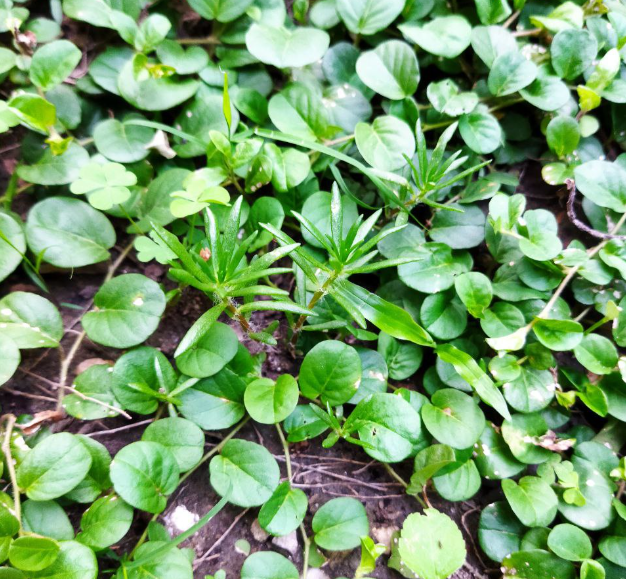
Así mismo volvieron a aparecer las zinnias, tagetes y cosmos, tan solo de las semillas que quedaron en la tierra. Aunque no solo las flores se multiplicaron, ¡también las espinacas! Ahora tengo un cultivo de espinaca naciendo entre las grietas del cemento, es sorprendente.
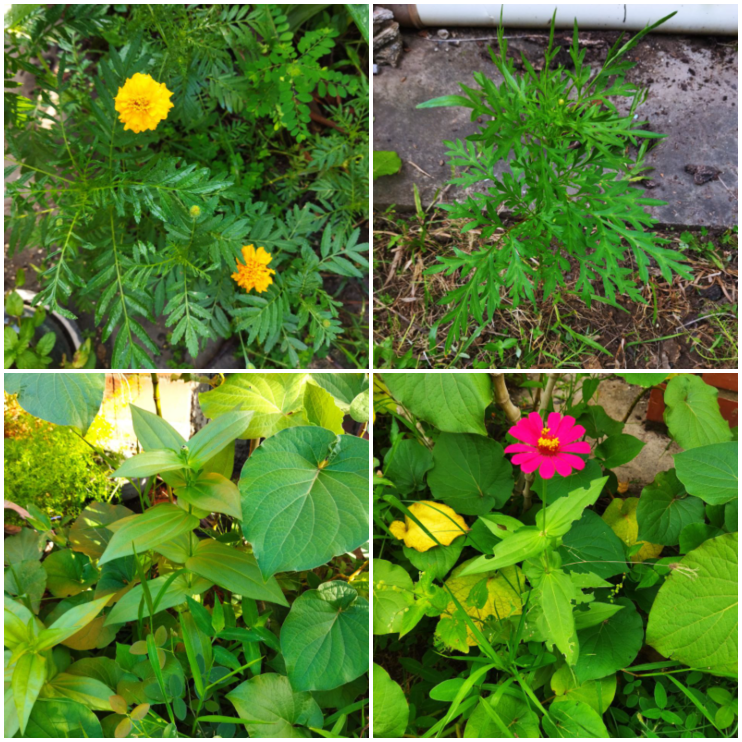
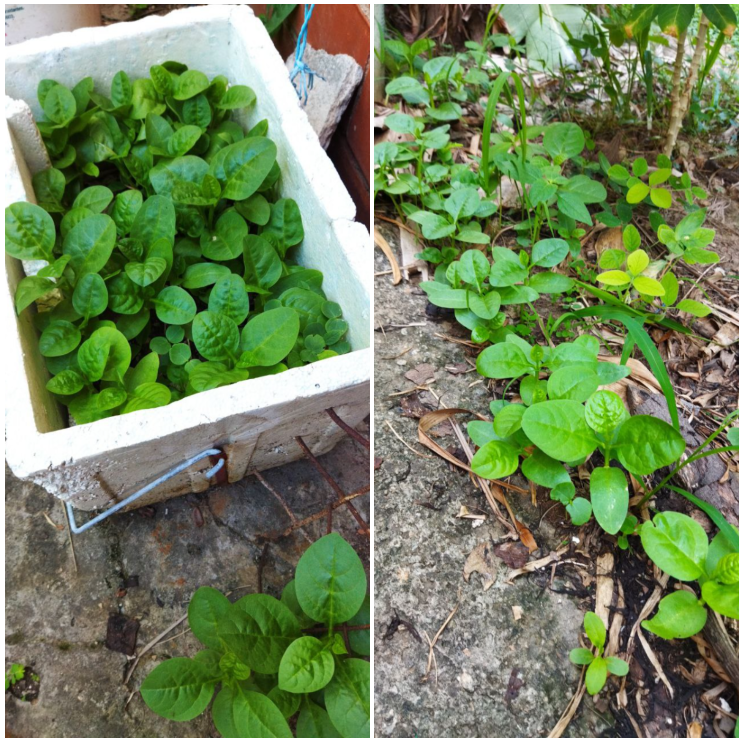
Y he aquí el Caladio que les mencione al principio, lo sembré de un hijuelo que me regalaron y al poco tiempo sus hojas se secaron y desapareció, pensé que había muerto, pero al empezar las primeras lluvias brotó como por arte de magia! Y no solo eso sino que creció como 3 veces el tamaño que tenía antes! incluso hasta dio una especie de flor!
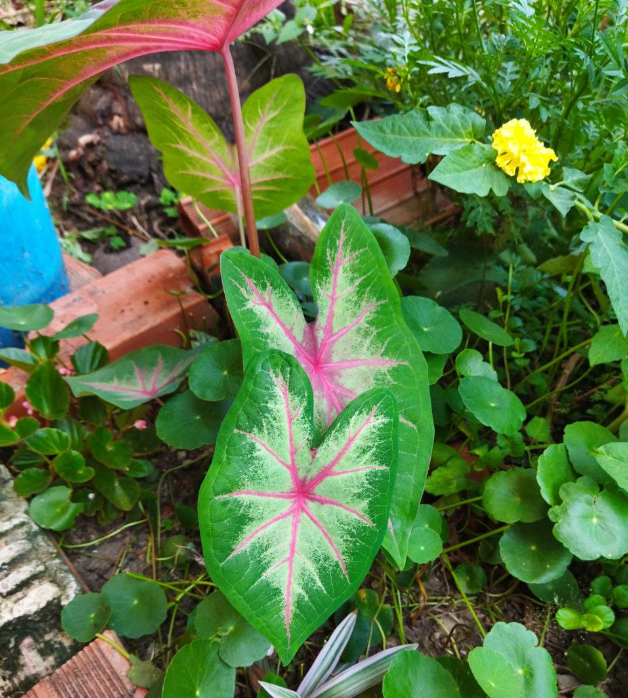
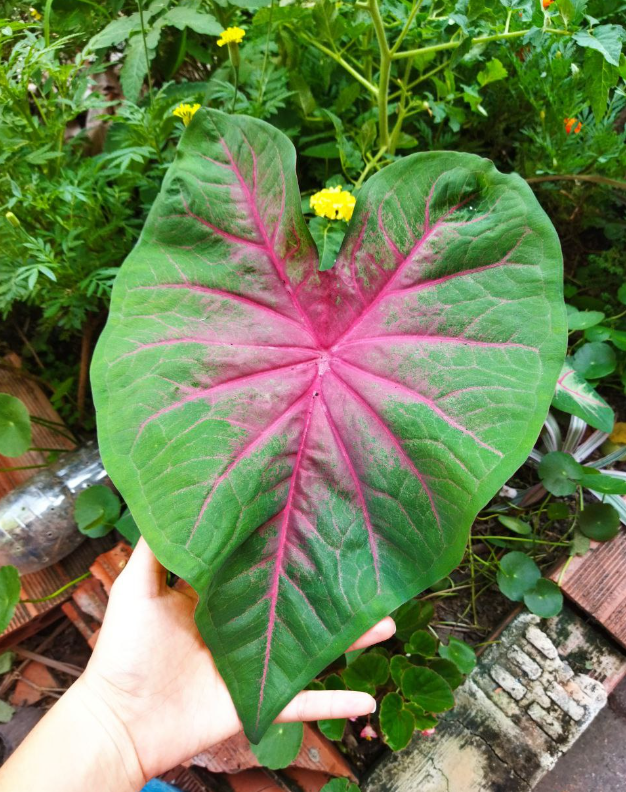
Seguidamente observen que no solo dejar que las flores se sequen y se caigan es beneficioso! Funciona igual con las plantas frutales. El tiempo que cultive parchita o maracuyá fue inevitable que algunas se dañaran, como las dejaba tiradas en el suelo cuando esto ocurría, ¡pues nació otra plantita de parchita! Así que me iré preparando nuevamente para la invasión de esta planta por otro año jajaja.
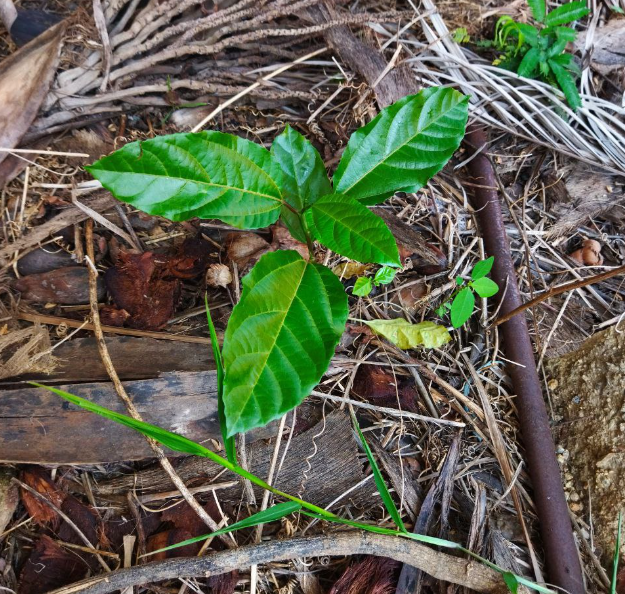
Me emociona mucho todo esto! No puedo esperar para mostrarles más de lo que he ido descubriendo, pero debo limpiar porque ya las malas hierbas no me dejan apreciar las demás plantas. Pronto les estaré contando más! Espero este post les guste y les anime a dejar sus plantas ser un poquito más libres y salvajes, puede resultar beneficioso!


English
When the rainy season ends, my entire garden begins to wilt and look dry and dull. Only a few plants withstand the inclement heat and lack of moisture. But as soon as it rains again, many revive as if by magic, seeds that had been in the ground for months emerge and come together to form a beautiful heterogeneous foliage. But how do I make this happen? Well, the first thing is that I rarely prune my plants or cut the flowers to put in vases or anything like that inside the house, I prefer to admire them right where they are born, on the plant. This way, most plants, drop their seeds which are deposited in the soil waiting for the best time to sprout.

Here you can see a lot of Jamaican Sorrel seedlings among the weeds.
The second important tip is that at the time of cleaning, I just cut the grass a little and pull out the weeds by the roots, so all the seeds of the plants I like remain there. But not only the seeds, there are other plants like Caladiums, for example, whose root can "hibernate" or something similar, until it is the right time to sprout again. I know this because I read something about it some time ago and I was able to observe it recently with the one I have.
This year the rainy season came early and I was surprised to see again so many plants that I thought were lost in my garden!

The moss rose were some that barely held on, I kept them even though I thought they had died, because they became thin and stunned hahaha. Now they have regained their vigor and are showing their beautiful colors again!

Something curious about this plant is that I did not know that they also reproduce by seeds, since reproduction by cuttings is the easiest, it is the most used, but look at the results of letting the dried flowers fall off naturally! ;)

Likewise, zinnias, marigolds and cosmoses reappeared, just from the seeds that were left in the soil. But not only the flowers multiplied, but also the spinach! I now have a crop of spinach growing between the cracks in the cement, it's amazing.


And here is the Caladium that I mentioned at the beginning, I planted it from a little shoot that was given to me and soon after its leaves dried up and disappeared, I thought it had died, but when the first rains started it sprouted as if by magic! And not only that but it grew about 3 times the size it had before! it even gave a kind of flower!


Next, note that not only letting the flowers dry out and fall off is beneficial! It works the same with fruit plants. The time I grew passion fruit it was inevitable that some of them would get spoiled, as I would leave them on the ground whenever this happened, well, another passion fruit plant was born! So I will be preparing again for the invasion of this plant for another year hahaha.

I am so excited about all of this! I can't wait to show you more of what I've been discovering, but I have to clean up because the weeds won't let me appreciate the other plants. I will be telling you more soon! I hope you like this post and it encourages you to let your plants be a little bit more free and wild, it can be beneficial!

Gracias por leerme. | Thanks for reading.
Todas las fotos son de mi autoría. | All photos are my own.

Que bello jardín ,me encantan los corazones,las siempre vivas,coqueta que ví por allíy otras flores silvestres,también espinacas que son muy nutritivas,si al pasar la lluvia las plantas cobran mas fuerza y germinan otras.
Happy July! It's #gardenjournal time! Write about your garden - progress, successes, failures, tips, hints, plans and dreams - to connect with other gardeners and win HIVE. 🌱
Find us here!
Congratulations @fanyokami! You have completed the following achievement on the Hive blockchain and have been rewarded with new badge(s):
Your next target is to reach 5000 upvotes.
You can view your badges on your board and compare yourself to others in the Ranking
If you no longer want to receive notifications, reply to this comment with the word
STOPCheck out the last post from @hivebuzz: